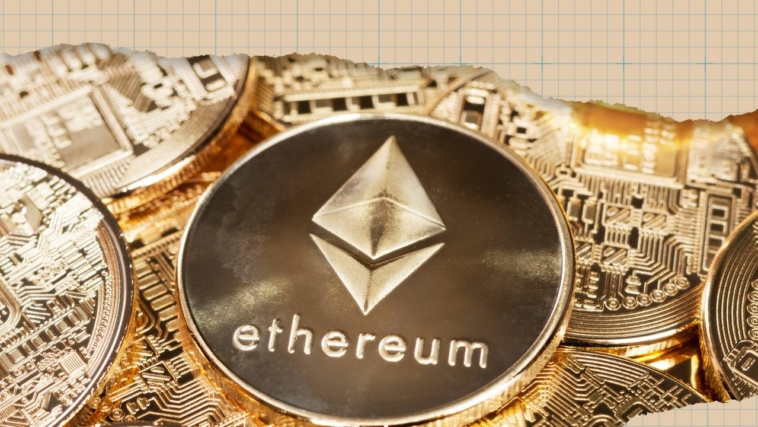Ethereum is a blockchain platform powered by the native cryptocurrency ether (ETH). It enables users to make transactions, earn interest on their holdings, use and store nonfungible tokens and more.
The network also permits the creation of decentralized applications (DApps), which enable complex transactions between users without relying on intermediaries. This is achieved through smart contracts which automate the process and eliminate human involvement.
Decentralization and anonymity
Ethereum is a decentralized blockchain-based platform for creating applications on top of the Bitcoin network. It uses its own native cryptocurrency, called Ether, as the unit of value on the network.
One major advantage of a decentralized system is that there is no central authority to oversee data flow. All information is stored on different connection points (nodes), meaning no single person or group has complete control over the network, decreasing the risk of corruption and malicious takeovers.
Another advantage of a decentralized system is that it protects users’ privacy. Centralized operators can access and analyze user information in order to better target them, while decentralized architectures reduce the chances of third parties gaining this knowledge.
Decentralized systems also protect information from theft or corruption by offering an alternative means to store and transfer it. Blockchain, for example, acts as a secure record of data that’s distributed among nodes, making it more challenging for malicious actors to gain control over the system.
However, it’s essential to remember that blockchains do not guarantee total privacy. Depending on the type of blockchain, all nodes in the network could potentially view each other’s activities, potentially leading to extensive metadata that could be exploited by malicious actors to target individuals.
Furthermore, decentralized systems can be compromised due to holes in their code. That is why selecting a secure blockchain is so essential.
On September 15, 2022, Ethereum transitioned from proof-of-work (PoW) to proof-of-stake (PoS). This shift increased mining or block validation power for those with more coins but required more nodes to do the work; making it more energy intensive but improving security at the same time.
Infinite supply
Infinite supply is a feature common among many cryptocurrencies. This enables projects to create more coins without raising their price, though this could become risky if an asset’s value is expected to surge significantly in the future.
When selecting a cryptocurrency with an infinite supply, there are a few things to take into account. First and foremost, make sure the token isn’t deflationary.
Deflationary cryptocurrencies are susceptible to hoarding and speculation, leading to extreme price swings. This presents a major challenge for crypto investors as they could potentially lose up to 20 percent of their initial investment.
Another factor to consider is the total number of circulating tokens. This figure represents all tokens available in circulation, excluding vested, reserved or burned ones.
Coins with an infinite supply can become deflationary if their supply exceeds demand, leading to price drops. This occurs when fewer people are willing to buy or sell a given crypto asset, resulting in lower liquidity and lack of demand for the currency.
Ethereum’s current supply is limited to 120 million tokens and this may remain the case in the future. However, anticipated changes to the Ethereum platform could alter its supply dynamics.
One of the most crucial elements to consider is how a coin’s price will react to changes in supply. This can be affected by how much is burned on base fees as well as mining rewards.
Bitcoin, for instance, features a halving mechanism built into its protocol that prevents it from ever becoming oversupplied. Furthermore, its limited supply helps distinguish it from fiat currencies which increase their supply due to central bank monetary policies.
In certain circumstances, a coin’s supply can decrease or even disappear entirely. This could occur due to an upgrade or development that makes mining or stake the coin unprofitable.
In certain instances, a coin’s price can increase due to increased demand. This could indicate an impending bubble or simply indicate that its value is on the verge of becoming more secure.
Smart contracts
Smart contracts are computer programs embedded in the Ethereum network’s blockchain, designed to automatically execute when certain conditions are met. This automation makes them more flexible than traditional agreements but also presents some difficulties.
A smart contract may not be able to respond rapidly or easily to changing conditions, such as freezing temperatures in an area where products are being shipped. In such cases, the smart contract could fail to execute its intended task.
To circumvent this issue, contracting parties can use oracles to retrieve data from off-chain sources and push it onto their smart contract. These trusted third parties monitor conditions and automatically push data onto a smart contract when necessary – such as when temperatures in certain locations drop below freezing.
Another advantage of smart contracts is their deterministic and immutability, meaning the end result remains consistent regardless of who executes them. This makes them ideal for resolving ownership disputes as well as managing digital assets and information.
Automation of these processes also eliminates the need for intermediaries like banks or brokers, cutting transaction costs and eliminating fees. Furthermore, this process is transparent and secure as each smart contract’s code is executed by all nodes in the network.
Smart contracts hold great promise for the future. Here are a few potential uses for them:
Mortgages, digital identity management, supply chain logistics, stock market trading and securities, organ allocation/transplant lists, renting/leasing of property – the list is endless!
Ethereum has become popular with the crypto community due to its extensive selection of smart contract features, such as multi-signature accounts and automatic token release after certain events occur. These capabilities enable users to streamline their transactions while keeping an immutable record of what was agreed upon.
These features enable users to create smart contracts in any programming language suitable for computer programs. Solidity, the popular programming language, is often used when building contracts on Ethereum; however, many other programming languages are supported as well.
Community requirements
Ethereum is an exciting blockchain platform, enabling developers to create amazing new projects. Aside from its flagship digital currency, it also handles financial transactions, smart contracts and the coolest of all: data storage for decentralized applications known as DApps. With Ethereum, developers have endless possibilities.
Ethereum is an impressive piece of software, yet it not without its drawbacks. The network has a hard cap of 21 million coins which limits the applications it can support. Furthermore, there are some serious technical obstacles that nontechies find difficult to learn and master.
In conclusion, it is essential to utilize a decentralized, trustless and transparent network in ways that are tailored to your unique circumstances. A great example is by educating both staff and customers on its advantages. In doing so, your team will be able to deliver more efficient products, superior customer service and enhanced brand image while having fun at the same time.



